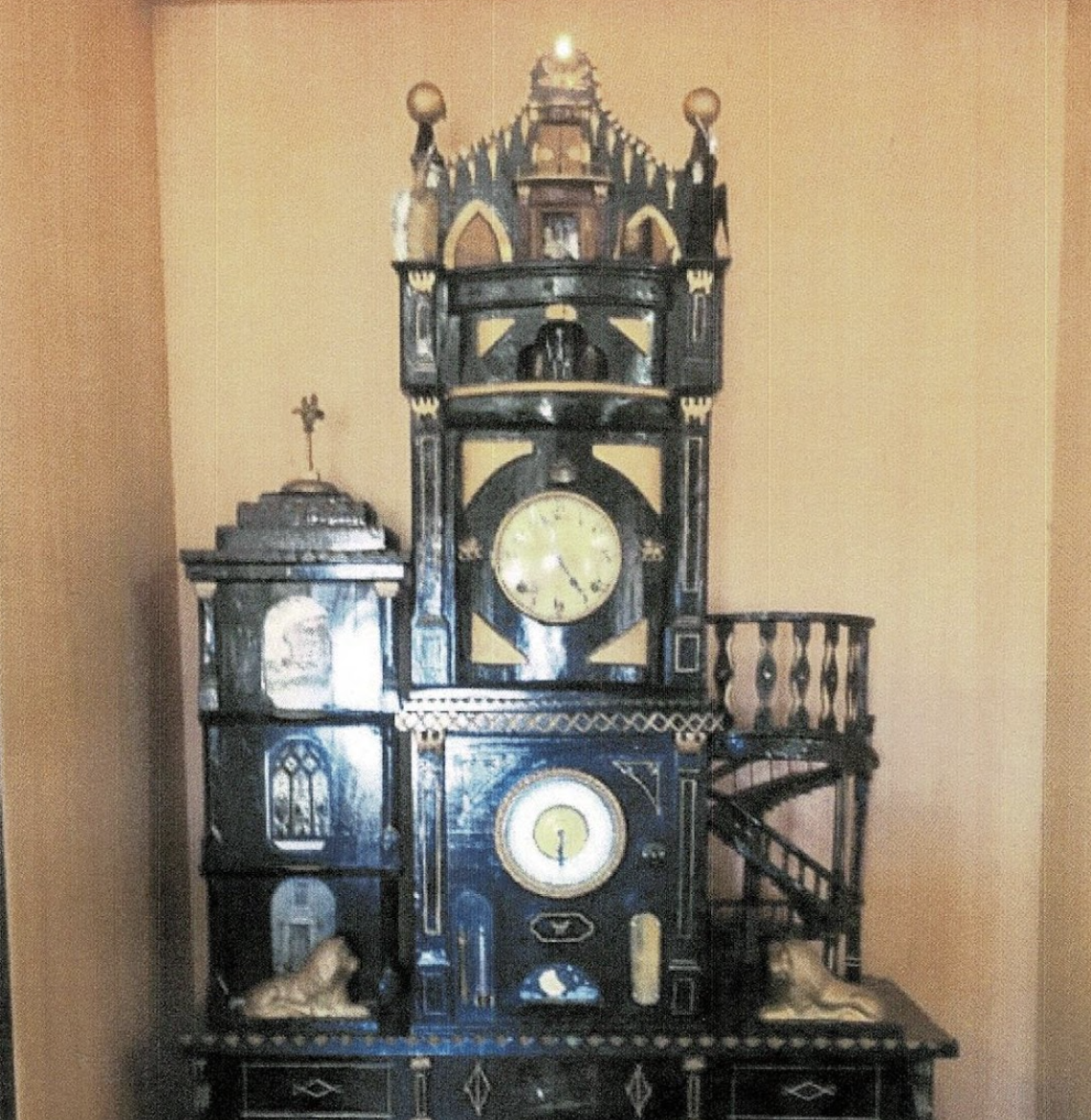Around 1915, 22-year-old Sid Boon of Longford visited a display touring Tasmania, where a replica of the famous Strasburg clock was being displayed. He was so impressed that he was inspired to build a replica. With only a photograph and a glimpse of the exterior and working operations, coupled with his inventive genius, he set to work.
After twelve months of painstaking labour the model was completed and put on public display, generating a great deal of interest and comment. Twenty years later in 1935, Sid made improvements to the clock making it more attractive and continuing to display at various shows and exhibitions.
When he began the clock in 1915, local materials were brought together, including boards from kerosene boxes and clock workings. Sid fashioned other needed mechanisms for the clock’s various functions in his workshop, including calculating the size and fashioning the gears.
The entire movements were controlled by an eight-day clock which he purchased.
Newspaper Report – Examiner Launceston 25 September 1935. “Although not an exact replica of the original, Mr Boon’s model embodies all the characteristics of the famous clock, it is six feet high and three feet wide. On top of the clock proper is a miniature cathedral, on either side of which stand the angels of life and death. At the end of each hour these figures turn to face each other, the central portals open, and a figure of the Saviour appears. Through side doors a procession of apostles emerges and each in turn bows to the central figure. When the fifth figure, representing Peter, approaches, Satan appears through opening doors on a balcony and Peter, tempted, turns his back on the Saviour.
At the foot of the clock a globe of the world revolves once in every 24 hours, with the sun in the background, indicating that portion of the world in sunlight. A chart of the course of the stars for each month of the year is also shown, this being worked by the clock itself. In addition to the time of the day, the clock indicates the day of the week, the date of the month, and the month of the year. All stages of the month are shown, from the tiny arc of the new moon to that of the moon on the wane. Day is indicated by the appearance of a white carriage drawn by two horses, and a black carriage and horses are utilised to depict night. Figures representing the four ages of man emerge from the clock every hour.
The infinite labour, the great patience and skill displayed in fashioning the size of the various gears required, has occasioned great wonder on the part of those who have seen the clock in motion, especially considering that Mr. Boon was forced to invent his own mechanical system for the many movements. It is very unlikely that a model such as this has ever been attempted or completed anywhere else in Australia”.
Sid’s model-making did not stop with the clock, but also built a model steam engine which was displayed at shows and exhibitions.
The clock survives and for years was stored in the vestry of the Longford Methodist Church, where Sid was an active member, then passed to the Longford National Trust and is exhibited at “Clarendon”, Evandale.
Other Information – Sidney Roy Boon
- Born 25 June 1893, “Palmerston”, Cressy
- Parents: Arthur Edwin Boon and Margret (nee Downey)
- Employment: Owner of a bicycle business at Evandale, working with his father in a boot making business at Longford, then engineering work at A.G. Webster and Sons, road roller driver with the Longford Council, and his own engineering business at. Longford. He is noted as doing maintenance work on steam engines in the Longford area.
- Marriages:
1. First to Pearl Florence McLean (1881-1941) on 23 December 1925 at the Evandale Methodist Church
2. Second to Sylvia Alice (nee Tubb) Baker (1893-1968) on 22 April 1944 at the Longford Methodist Church.
- Children: Nil but three stepchildren, Max Frederick Baker, Betty June Dodd and Molly Jean McWilliams.
- Church: He was an active member of the Methodist Church at Evandale and later Longford, a local preacher, trustee and ardent worker for the Church.
- Death: 7 November 1944
- Burial: Longford Methodist Cemetery.
Written by Ivan Badcock

